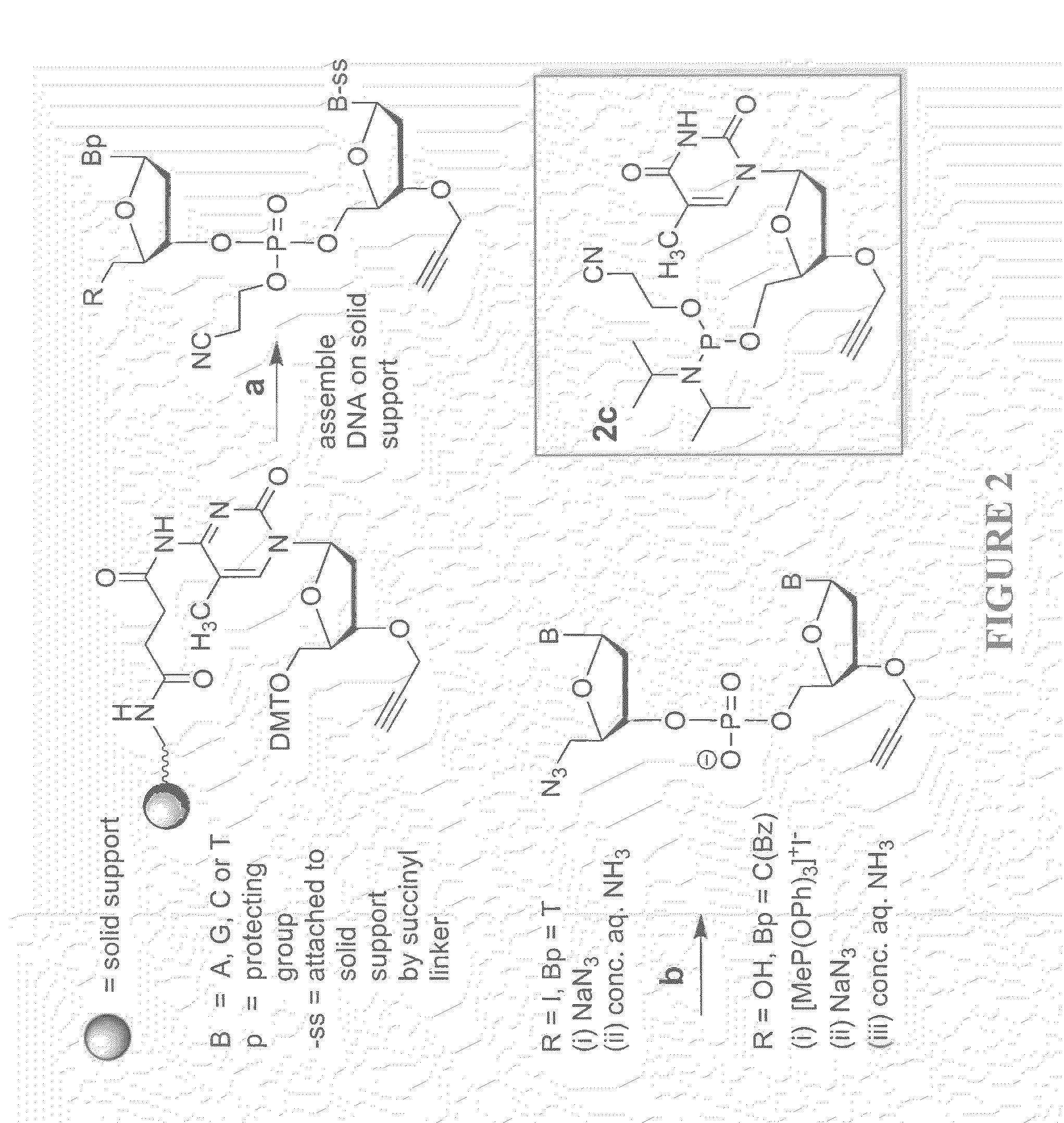Oligonucleotide ligation
a technology of oligonucleotides and ligation, which is applied in the preparation of sugar derivatives, sugar derivates, sugar derivatives, etc., can solve the problems of reducing the coupling efficiency of rna phosphoramidite monomers, and dna strands up to 150 bases in length
- Summary
- Abstract
- Description
- Claims
- Application Information
AI Technical Summary
Benefits of technology
Problems solved by technology
Method used
Image
Examples
Embodiment Construction
[0098]Solid-phase DNA synthesis is an advanced technology that has led to pioneering discoveries in biology and nanotechnology. Although automated solid-phase phosphoramidite synthesis is highly efficient, the accumulation of modifications (mutations) and failure sequences caused by side-reactions and imperfect coupling imposes a practical limit of around 150 bases on the length of oligonucleotides that can be made. Consequently very long synthetic oligonucleotides are not suitable for use in biological applications that require sequence fidelity, so combinations of shorter sequences are normally used in PCR-mediated gene assembly. This enzymatic method of DNA synthesis has the intrinsic limitation that site-specific chemical modifications can only be introduced in the primer regions of the resulting constructs. Certain unnatural analogues can be inserted throughout the PCR amplicon via modified dNTPs, but this process is essentially uncontrolled and does not allow combinations of d...
PUM
| Property | Measurement | Unit |
|---|---|---|
| thickness | aaaaa | aaaaa |
| volume | aaaaa | aaaaa |
| coupling time | aaaaa | aaaaa |
Abstract
Description
Claims
Application Information
 Login to View More
Login to View More - R&D
- Intellectual Property
- Life Sciences
- Materials
- Tech Scout
- Unparalleled Data Quality
- Higher Quality Content
- 60% Fewer Hallucinations
Browse by: Latest US Patents, China's latest patents, Technical Efficacy Thesaurus, Application Domain, Technology Topic, Popular Technical Reports.
© 2025 PatSnap. All rights reserved.Legal|Privacy policy|Modern Slavery Act Transparency Statement|Sitemap|About US| Contact US: help@patsnap.com



